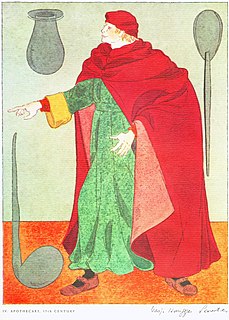
An antiquarian or antiquary is an aficionado or student of antiquities or things of the past. More specifically, the term is used for those who study history with particular attention to ancient artifacts, archaeological and historic sites, or historic archives and manuscripts. The essence of antiquarianism is a focus on the empirical evidence of the past, and is perhaps best encapsulated in the motto adopted by the 18th-century antiquary Sir Richard Colt Hoare, "We speak from facts, not theory."

John Robert Mortimer was an English corn-merchant and archaeologist who lived in Driffield, East Riding of Yorkshire.
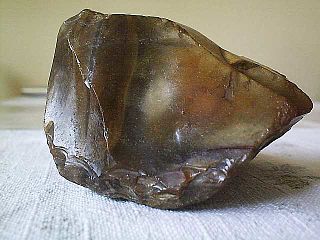
The Clactonian is the name given by archaeologists to an industry of European flint tool manufacture that dates to the early part of the interglacial period known as the Hoxnian, the Mindel-Riss or the Holstein stages. Clactonian tools were made by Homo heidelbergensis.
Archaeology is the study of human activity in the past, primarily through the recovery and analysis of the material culture and environmental data that they have left behind, which includes artifacts, architecture, biofacts and cultural landscapes.

Cabinets of curiosities were notable collections of objects. The term cabinet originally described a room rather than a piece of furniture. Modern terminology would categorize the objects included as belonging to natural history, geology, ethnography, archaeology, religious or historical relics, works of art, and antiquities. The classic cabinet of curiosities emerged in the sixteenth century, although more rudimentary collections had existed earlier. In addition to the most famous and best documented cabinets of rulers and aristocrats, members of the merchant class and early practitioners of science in Europe formed collections that were precursors to museums.
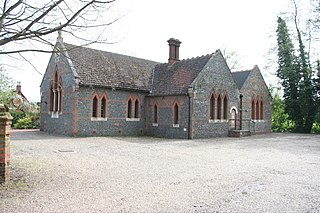
Hoxne is an anciently-established village in the Mid Suffolk district of Suffolk, England, about five miles (8 km) east-southeast of Diss, Norfolk and 1⁄2 mile (800 m) south of the River Waveney. The parish is irregularly shaped, covering the villages of Hoxne, Cross Street and Heckfield Green, with a 'tongue' extending southwards to take in part of the former RAF Horham airfield.
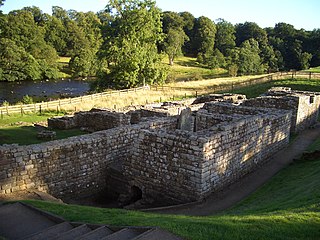
Cilurnum or Cilurvum was a fort on Hadrian's Wall mentioned in the Notitia Dignitatum. It is now identified with the fort found at Chesters near the village of Walwick, Northumberland, England. It was built in 123 AD, just after the wall's completion.

The Museum of Archaeology and Anthropology, also known as MAA, at the University of Cambridge houses the University's collections of local antiquities, together with archaeological and ethnographic artefacts from around the world. The museum is located on the University's Downing Site, on the corner of Downing Street and Tennis Court Road. In 2013 it reopened following a major refurbishment of the exhibition galleries, with a new public entrance directly on to Downing Street.

Charles Roach Smith, FSA, was an English antiquarian and amateur archaeologist who was elected a fellow of the Society of Antiquaries of London, and the London Numismatic Society. He was a founding member of the British Archaeological Association. Roach Smith pioneered the statistical study of Roman coin hoards.
The decade of the 1790s in archaeology involved some significant events.

John Bagford was an English antiquarian, writer, bibliographer, ballad-collector and bookseller.
Sir Samuel Rush Meyrick, KH was an English collector and scholar of arms and armour. He lived at Goodrich Court, Goodrich, Herefordshire, and introduced systematic principles to the study of his subject.
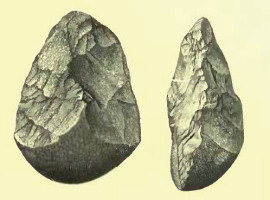
The Saltley handaxe is a quartzite hand axe found in the gravels of the valley of the River Rea in the Saltley area of Birmingham, England in 1890. Believed to be approximately 500,000 years old, it was the first human artefact from the paleolithic era found in the English Midlands, which had previously been considered not to have been inhabited before the end of the last glacial period.

The Gray's Inn Lane Hand Axe is a pointed flint hand axe, found buried in gravel under Gray's Inn Lane, London, England, by pioneering archaeologist John Conyers in 1679, and now in the British Museum. The hand axe is a fine example from about 350,000 years ago, in the Lower Paleolithic period, but its main significance lies in the role it and the circumstances of its excavation played in the emerging understanding of early human history.
The twelve volume Catalogue of Political and Personal Satires Preserved in the Department of Prints and Drawings in the British Museum is the primary reference work for the study of British satirical prints of the 18th and 19th century. Most of the content of the catalogue is now available through the British Museum's on-line database.

Henry Hare, 2nd Baron Coleraine (1636–1708) was an English politician and antiquary.

Edward Simpson was a British geologist and forger of antiquities, such as arrowheads and fossils. He was also known as Fossil Willy, Old Antiquarian, Cockney Bill, Bones, and Shirtless. Other names included John Wilson, of Burlington, and Jerry Taylor, of Billery-dale, Yorkshire Moors.
